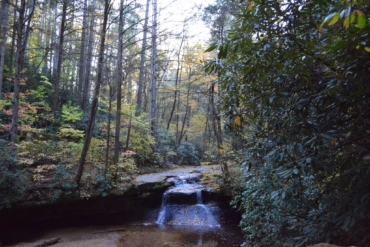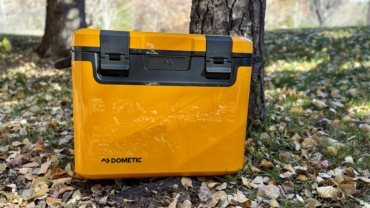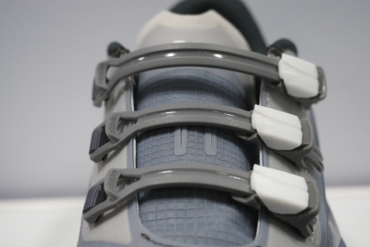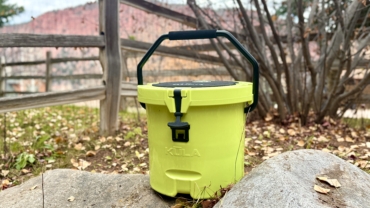Quality gear is important because it can make or break your trip. Your gear should be keeping you safe, comfortable, and happy.
As a minimalist who travels constantly, I like to keep our gear to the absolute essentials. This was our fourth year on the road for multiple months with just a rental car and tent, van life without a van as I say.
Instead of hiking the northern half of the Appalachian Trail this summer due to an injury, my boyfriend and I drove around the country, visiting 47 U.S. National Parks and three Canadian National Parks.
In past years, we’ve stayed in one place for much longer, day hiking or backpacking our way through a nearby National Park, National Monument, or National Forest, using most of this gear.
Below is a list of camping, cooking, hiking, and travel gear that we used every day this summer.
National Parks Road Trip: Dialed-In Gear
Sleeping Kit

Our sleep system is minimal and comfortable. Everything rolls up, compresses, and packs down into two Hyperlite stuff sacks and the two Therm-a-Rest sleeping pad sacks.
- NEMO Dagger OSMO 2P Tent
- Therm-a-Rest NeoAir XLite Sleeping Pad
- Feathered Friends Flicker UL Quilt Sleeping Bag
- Therm-a-Rest Vesper 20F/-6C Quilt
- Sea to Summit Aeros Ultralight Pillow
- Black Diamond Moji Lantern – Rechargeable Version
- Black Diamond Equipment – SpotLite 200 Headlamp
- Therm-a-Rest pump
Cooking Kit

We love to eat and we’re always on a budget, so we cook most of our meals at any picnic table we find along the way. This cooking system is compact and durable.
- Jetboil MicroMo Cooking System
- Jetboil Summit Skillet
- Sea to Summit Alpha Light Spoon
- Hyperlite REpack
- BearVault BV450
Footwear and Apparel

We hike as often as possible, and these items have been comfortable and long-lasting. These are brands that I continue rebuying from when my socks or shoes finally need a new pair.
- Saucony Peregrine 11 Wide
- Women’s Saucony Peregrine 12 Wide
- Darn Tough socks
- ExOfficio Women’s Give-N-Go 2.0 Bikini Brief
- Columbia Women’s PFG Freezer III Dress
- REI Co-op Out the Door Cap
- Goodr Sunglasses
- Outdoor Research Women’s Helium Rain Jacket
- Daylite Expandable Travel Pack 26 + 6
- Hyperlite 2400 Junction Pack
- Nalgene Water Bottle
Duffels and More

With just a passenger-size rental car, I try to keep our things as organized as possible. At the end of our road trip, the REI duffel holds all of our things as we move to a new temporary home. The Hyperlite stuff sacks and pods help organize things into categories like warm weather gear, electronics, toiletries, and so on.
- REI Co-op Roadtripper 100 Duffel
- Hyperlite Ultralight Roll-Top Stuff Sacks + Pods
- Therm-a-Rest Z Seat
Our Gear Organization — Living in a Rental Car

My biggest tip for organizing is to set a place for something and always keep it consistent. The way I organize a car depends on the car. On this trip, though, the food went in the back with all of the cooking things, bath towels, and extra layers.
The backpacks and sleeping items went behind the passenger seat. The clothing bag with toiletries and the tent went behind the driver’s seat. Extra shoes we place under the seats to maximize storage.
At the end of the trip, all of the food will be eaten and everything else can be packed into the duffel bag, the Hyperlite backpack, and my Osprey backpack. It’s a simple system for our gear that I think we’ve perfected.
Why Van Life, When I Don’t Own a Van
Unlike many people, we don’t own a car or a van. We travel consistently, so we’re either given a rental car for a contract job, or we choose to rent a car for months at a time to travel ourselves.

Having a car and a tent makes things much easier in my opinion. Here are a few reasons why.
- We don’t have to worry about road restrictions for larger vehicles like narrow roads or low clearances, which exist in many National Parks.
- A rental car doesn’t require oversize vehicle parking.
- We typically use less gas compared to vans — not on this grand road trip all over the country, but in this rental car hybrid, I could fill up the tank for about $40 and get over 550 miles.
- A smaller car saves space. I believe the more space you have, the more things you’ll have, so making sure I can pack everything into two duffels helps me cut back on 1) spending on extra gear and 2) packing excess gear.
This is something I learned and truly felt on the Appalachian Trail — you need very little to exist and enjoy life.
Our gear list has slightly changed over the years as lighter gear has come to market, but we love gear that we can use for years — and the gear on this list is it. We’ve tested it for months backpacking, hiking, car camping, road tripping, and more. And we hope to use most of this when we return to the Appalachian Trail in March 2023.










